Striking Portrayals of Doors Tap into Surrealist Traditions
Published by Reblogs - Credits in Posts,
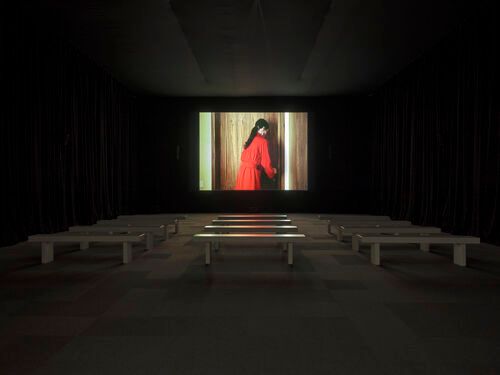
Doors surround us in everyday life. They can offer safety, comfort, and passage from one space to another. But these ubiquitous, practical structures are also rich symbols for artists, many of whom choose to focus on doors for their underlying eerie, surreal, or psychological potential. Some ask audiences to question what lies behind a doorway, offering hints at a space that exists out of sight. Others present doors as portals to new worlds or unknown parts of the mind.
A couple of recent major shows have centered on the uncanny nature of the mundane entrance. Last autumn, Christian Marclay exhibited his expansive project "Doors" at White Cube’s Mason’s Yard space. The work is in his characteristic video format, in which he scours movie footage and cuts together tension-filled edits themed around apparently banal items such as clocks and telephones. In his latest work, actors from countless films can be seen opening and closing doors, which Marclay called "fascinating objects, rich with symbolism" in the show’s notes. "They can hide or reveal, express opposites of light or dark, exterior or interior, open or closed.…They are commonplace, yet unfamiliar. We find ourselves wondering what is on the other side, where we may end up."

This uncertainty was also evoked by Mike Nelson at his spring 2023 Hayward Gallery exhibition "Extinction Beckons," in which a vast labyrinth of rooms separated by horrifyingly creaky wooden doors drew visitors into a post-apocalyptic narrative. Behind some doors, ramshackle rooms displayed the remnants of industrial survival. Behind others were voodoo altars and ripped-up walls, inviting the viewer to question quite what had happened in this space.
This intrigue in doors is perhaps driven by the renewed interest in Surrealism and psychologically inspired figurative work. From Dorothea Tanning’s ajar door in her iconic painting Eine Kleine Nachtmusik (1943) to René Magritte’s painting L’embellie (1962), in which a standalone door opens to a perfectly cloudy sky and sandy beach, artists have long been inspired by the deep emotional potential of entryways.

Model Car Graveyard, 2023
Hettie Inniss
GRIMM
The theme has been taken up by a host of emerging names, too. GRIMM’s Amsterdam space recently showed "The Painted Room," a group exhibition curated by artist Caroline Walker, which presented images of internal spaces that are full of dramatic tension. In the show, Hettie Inniss’s paintings of domestic rooms are flooded with warm colors. They are painted from memory, homing in on the details that she remembers while leaving other parts of the canvas almost empty. Her open doorways often cast dramatic shadows, taking on a haunting quality and inviting viewers to step into spectral spaces with little solid ground.
Featured in the same show, Anna Freeman Bentley warps her viewer’s sense of space, chopping up the composition with multiple open doors. "I use painting to explore something unseen, something potentially beyond," said Freeman Bentley. "The doors have become an important motif as they are portals that lead to an elsewhere, one filled with possibilities. The architectural structure of a door offers an opportunity to build multiple spaces within a single image. The cutting up of the space is also important in helping to create a disconcerting effect that asks the viewer to question ideas of reality and illusion."
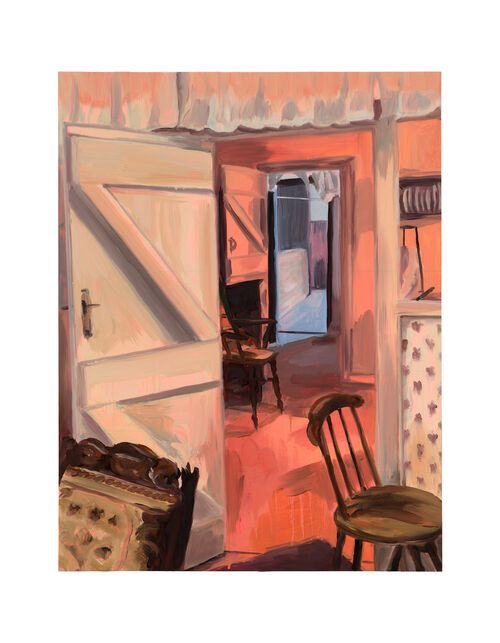
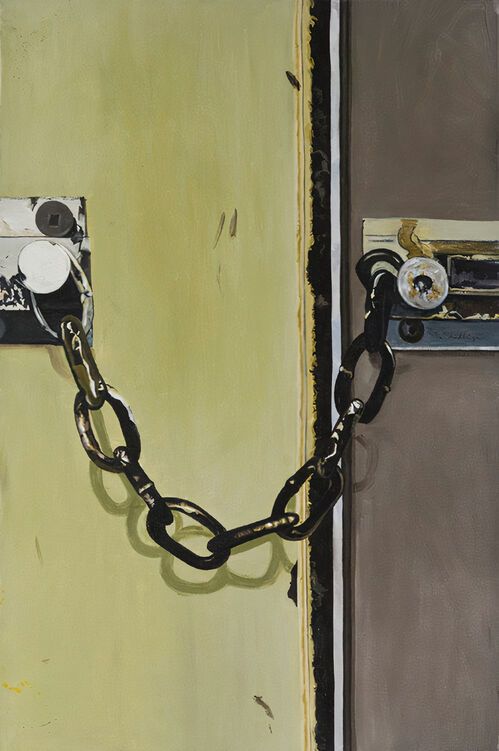
She sometimes enhances the spatial confusion by painting mirrored doors that hide what lies behind them. "Mirrors reveal and conceal," she said. "I like the disorientation that mirrors can bring as that suggests an alternate reading of the space depicted.…The space in a mirror is a space, and yet it’s also not a space, it is purely a reflection. A tense emotive atmosphere emanates from these multiple realms."
While these artists depict physical places, they also speak to the internal space of the mind. Canadian painter Brad Phillips evokes the psychological terror of doors, with motifs embedded into collective memory through horror movies. In Brian De Palma’s Door #2, shown in the artist’s 2023 solo show "I Know What I Did Last Summer" at de boer’s Los Angeles space, a man’s arm smashes through a closed wooden door and turns the handle. The connotation of everything happening off canvas is chilling. The work is named after the film director who is famous for his intense thrillers. Meanwhile Phillips’s Major Depressive Episode (2011) builds a subtler feeling of tension. It depicts a chain-lock on a flimsy door coated with flaking paint, which hints at the dangerous possibility of private space being broken into, or, thanks to the title, the door’s potential to block out the outside world when emotions take over.
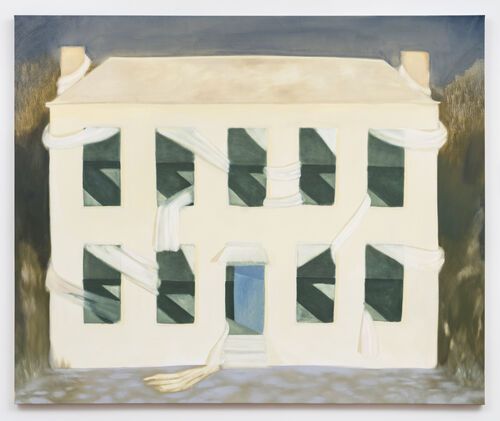
Recent Royal Academy graduate Mary Stephenson also paints deeply psychological works, often depicting buildings with open doorways. Baby Blue Door (2022) is a mournful painting showing a house with empty windows and door ajar, with swathes of fabrics wound through them. "The symbol of an open or missing door is about a lack of control," she said. "I like to think of the unconscious mind as a space that is hard to close off and shut ideas out of."
The artist has also recently started to paint buildings inspired by the forms of children’s playhouses. Their simple doors swing open with no fastening, offering entry in and out but little security. "I’m really interested in the building blocks established in our minds as children," she said. "Built through playing, these internal structures of the unconscious form a playground for us to make sense of the world in."
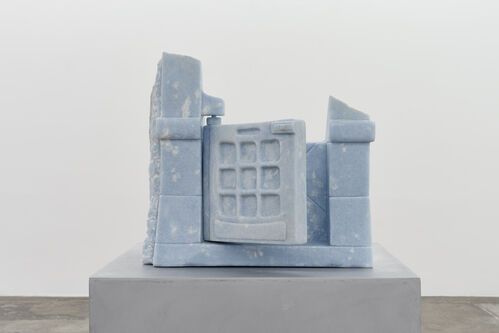
The doors of children’s playhouses also appeared in British sculptor Nevine Mahmoud’s 2022 exhibition "in mass and feeling" at London gallery Soft Opening. She presented them as carved stone replicas, removed from their surrounding buildings. "I use equipment I find discarded on the street; the user having outgrown the object’s function," said Mahmoud. "My hopes are that the stone renderings may produce a kind of sentimentality and seduction but also evoke unease."
Mahmoud often explores openings in her works (she also makes deeply erotic fruit-themed sculptures that are suggestive of body parts). In each case, the artist sees these subjects as thresholds, or "the way through to another, a carrier between inside and outside," she said. In a similar way, emerging painter Phoebe Evans explores the idea of doors opening into nothingness. Her magical realism–inspired works are soaked in hues of orange, purple, and pink, but there is an underlying disconcerting feeling. Like Inniss’s paintings, her works have a ghostly quality that suggests those walking through the doors might be transported to another place entirely. She sees the works as existing in past, present, and future, leaving the viewer floating outside of place and time.
Many artists using doors in their work do so to create a sense of unease. Their works play with viewers’ expectations of architecture, time, and reality. In doing so, they break down the boundaries between solid and ephemeral space, and blur the line between the physical world and the slippery interior of the mind.
